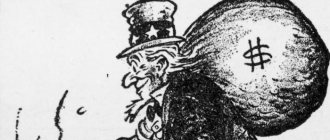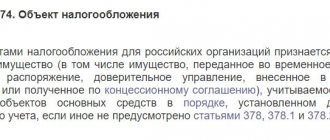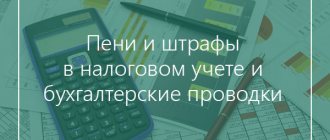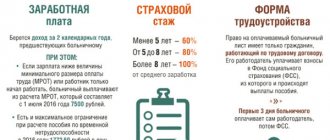Author: Ivan Ivanov
Excise tax on tobacco products is an indirect tax that is included in the cost of goods. The full list of excisable products is specified in Article 193 of the Tax Code of the Russian Federation.
So, excisable tobacco products include tobacco:
- smoking;
- pipe (has the shape of a thin cigar);
- chewing;
- sucking;
- nasvay;
- snuff;
- for use in hookahs;
- for cigarettes with and without filter;
- cigarette
Tobacco, which is used as raw material for the direct manufacture of tobacco products, does not qualify as excisable products.
Excise goods of tobacco products
The tax does not only apply to filter cigarettes. The excise duty applies to types of tobacco, electronic smoking devices and smoking liquids. Tobacco for which tax is paid:
- Snuff.
- Chewing.
- Tubular.
- Smoking.
- Hookah bar.
- Cigarette.
- For cigarettes (with and without filter).
Manufacturers buy excise stamps for tobacco products at the stage of sales to retail chains. Tobacco as a raw material is not subject to tax burden. Electronic devices for permanent use and disposable items, together with nicotine liquids, have been subject to the law since 2021. At the moment when they began to be popular among smokers and young people.
The tax is established to replenish the budget from products sold that are not included in the list of necessary items for human life. Nicotine ruins people's health, and this fact is taken into account when determining government contributions. An indirect tax helps track the volume of nicotine products sold and observe annual sales dynamics.
General characteristics
If a company, for the purpose of producing an excisable tobacco product, purchased tobacco at cost without excise tax, but used it for other purposes (for example, resold it to another company), then it is obligated to reimburse the country’s budget in the amount of the cost of the excise tax.
This rule is provided for in paragraph 1 of Article 193 of the Tax Code of the Russian Federation. The production of cigarettes with or without a filter is carried out in accordance with the established standards of GOST 3935-2000 “Cigarettes. General specifications”, providing for the possibility of producing products of various brands.
According to the Decree of the Government of the Russian Federation No. 27 “On special brands for labeled tobacco products,” tobacco and its products that are manufactured on the territory of the Russian Federation (with the exception of export goods under signed contracts) are subject to mandatory labeling, which can confirm legal production on the territory of the Russian Federation.
Companies involved in the production of tobacco products are responsible for applying special markings. Payment for them is carried out based on the cost of purchasing raw materials. In addition, the Tax Code provides for the possibility of obtaining a refund of financial expenses.
All funds spent on the purchase of special stamps are transferred to the Gozznak association to cover production costs. Based on this, the mandatory payment made for special brands applies to all manufacturers of tobacco and related products and is not related to federal fees.
Excise tax rates on cigarettes
Tariffs for contributions to the budget for tobacco and smoking products are established by current legislation. They are accepted and put into operation by the Government of the country. Rates are updated annually and come into force on January 1 of the current year. Some tariffs are increased twice a year, some once, and some once every one and a half to two years. Trade in tobacco products is less likely to remain without an increase.
Excise tax on tobacco products 2021:
- All varieties of tobacco at a price of 2,772 rubles per kilogram.
- One cigar 188 rubles.
- For a thousand cigarillos, kretek and bidis 2,671 rubles.
- Per kilogram of heating tobacco is 5,280 rubles.
- One smoking electronic device 44 rubles.
- Liquid refill for an electronic device for 11 rubles per milliliter.
- For a thousand cigarettes and cigarettes from January 1, 1,562 rubles, and from July 1, 1,718 rubles. With an interest rate of 14.5 calculated value. This type of excise tax is calculated at two rates simultaneously (flat and ad valorem).
The excise tax on cigarettes in Russia in 2021 has not increased twice. The tax did not increase for a year and a half; the increase occurred only in the second half of the year. The rate has remained unchanged since January 2021.
Tariffs 2021:
- Ready-to-use varieties of tobacco: 3,050 rubles per kilo.
- One cigar 207 rubles.
- A thousand cigarillos, bidis and kretek 2,938 rubles.
- A kilogram of heating tobacco is 5,808 rubles.
- For one electronic smoking device 48 rubles.
- Smoking liquids for electronic devices: 12 rubles per milliliter.
- A thousand cigarettes and cigarettes are 1890 rubles and 14.5% of the estimated cost.
The increase in tariffs on nicotine products was 10 percentage points. The rate for electronic devices and liquids for them increased by 9%. The tax is not directly related to the pricing of tobacco products. However, an increase in rates entails an increase in prices in retail chains.
How to calculate
To calculate the cost of excise duty on cigarettes, you must use the formula provided for in Article 194 of the Tax Code of the Russian Federation:
Ca = Ats + Apns, where
Sa is the cost of excise tax, Ats is excise tax, which is determined at a fixed rate, Apns is excise tax, which is determined at the ad valorem tax rate (percent).
In turn, the ATS is calculated by multiplying the volume of cigarettes sold (Ops) by a fixed tax rate (FSN):
ATS = Ops * Fsn
Apns implies an ad valorem rate (Ac) of the share of the maximum retail cost of cigarettes (Spc), multiplied by the volume of tobacco products (Vtp):
Apns = Sps * Otp * Ac
In the process of determining the cost of excise duty, you must be more than careful, which will allow you to avoid problems with the tax and other regulatory authorities in the event of errors.
Excise stamp on cigarettes
The excise stamp for cigarettes is printed at the Goznak factory. It is needed for labeling tobacco products imported into the country and produced in the Russian Federation. An excise stamp with the name of the product is affixed to foreign goods, and a special one is affixed to products containing nicotine produced in Russia. The brand confirms the authenticity of the product through security features.
Excise stamps are printed on paper with a two-tone watermark. Indicating the country (Russia), coat of arms and signature excise stamp. The paper is permeated with two types of security fibers. Chemical protection is applied that changes color in ultraviolet rays. The name of the product matches the contents of the package and the quantity or weight of the products. The stamp contains an encapsulated phosphor - a reflective surface.
Special stamps are equipped with the same protective marks. They differ from excise taxes by the inscriptions Russian Federation, Tobacco products, Special stamp. A light watermark of one tone is printed. Not illuminated by ultraviolet light. The rank and number on the stamp are unique and never duplicated.
When comparing the listed protective characteristics when purchasing tobacco, remember how to check cigarettes for authenticity using the excise stamp.
A special device has been developed that helps verify the authenticity of the brand. Organizations use it when checking tobacco products. It's called Cassida Easy Check. Reads the presence of phosphor. When you point at the mark, it detects a protective element, the green indicator lights up and the sound signal turns on. If the indicator remains red, the stamp is fake.
Subsection 2.4. The amount of excise tax payable to the budget or accrued for reduction
The indicators of subsection 2.4 are calculated automatically based on data from subsections 2.1 -2.3:
| Indicator name | Filling procedure |
| Indicator code (column 1) | - code 40001 - Amount of excise tax payable to the budget - code 40002 - Amount of excess of tax deductions over the calculated amount of excise tax |
| Excise tax amount (column 2) | gr. 2 code 40001 = ∑ gr. 4 subsections 2.1 + ∑ gr. 4 subsections 2.2 by codes: 20003 - 20005, 20007, 20009, 20011, 20013, 20015 - ∑ gr. 3 subsections 2.3, if gr. 2 > 0 gr. 2 code 40002 = ∑ gr. 4 subsections 2.1 + ∑ gr. 4 subsections 2.2 by codes: 20003 - 20005, 20007, 20009, 20011, 20013, 20015 - ∑ gr. 3 subsections 2.3, if gr. 2 < 0 |
Attention! The amount of excise tax reflected under code 40001 is transferred (according to the corresponding BCC) to line 030 , and the amount under code 40002 is transferred to line 040 of section 1.
Responsibility for the sale of cigarettes without excise duty
The law punishes the sale of cigarettes without excise tax. Responsibility for such a violation is determined by law enforcement agencies. This is an administrative or criminal penalty. An administrative fine is imposed on both sellers and companies that sell tobacco worth less than 100 thousand rubles. The organization will be charged up to 50 thousand rubles, and the seller up to 5 thousand.
If a company or seller deliberately sells tobacco products worth more than 1 million rubles, criminal liability arises. The penalty for violating the law is up to 6 years in prison. Or a fine of up to 800 thousand rubles.
VAT definition and calculation examples
VAT is a value added tax.
It is paid by the counterparty from the difference between the purchased cost of the goods and the price at which the goods are sold. How to find a counterparty abroad, read here. Example of VAT calculation : An organization purchases 50 sweaters worth 200 rubles. The price includes 18% tax. It is paid for by the supplier. The cost of jackets, calculated as interest, can be expressed as 118%. The price of sweaters, excluding tax, is 169.5 rubles. The remaining amount of the cost (30.5 rubles) is VAT. For 50 jackets you will have to pay VAT in the amount of 1525 rubles.
Procedure for paying excise tax
Contributions to the budget from nicotine products are paid by manufacturers, importers and distributors. Each taxpayer generates a tax return based on the quantity of goods handled during the reporting month. Payment must be made by the 25th of the next month. For manufacturers at the place of production of products.
The manufacturer pays tax based on the fact of transfer of products to another division or sale to a retail chain. Reports to the tax authority every month on transactions carried out with excisable tobacco products.
The importer carries out an excisable transaction of importing tobacco and the customs declaration is a report on the date of the transaction. This reporting act contains information about the quantity of excise goods on which tax is paid. If transactions occur monthly, the excise tax is paid every month. In one payment, because advance excise payments are not established for the importer.
For tobacco sellers, the reporting system includes an act of acceptance and transfer of tobacco products. Based on this, the distributor calculates the excise duty on a monthly basis. The seller purchases nicotine products from manufacturers or importers. Pays the tax, observing the accepted deadline, until the 25th of the next month.
Benefits and preferences
Excise taxes do not apply to some categories of goods. These are excisable products transferred to company branches that cannot be taxpayers, ethyl alcohol transferred to company branches for the manufacture of excise-free products. Benefits are provided for denatured ethyl alcohol and alcohol-containing denatured goods sold under quotas, injection of gas into the reservoir in order to normalize pressure, injection of gas into underground storage facilities.
Excise taxes are not required to be paid on the sale of products subject to excise taxes that are placed under the export regime from the Russian Federation. Information about export confirmation documents is here. There is no need to pay tax on the initial sale of confiscated goods, products that do not have an owner, the sale of natural gas for personal consumption by housing cooperatives, individuals, and so on.
Exemption from excise taxes occurs only if records of the relevant transactions are kept.
Example of calculating excise tax on cigarettes
The distributor, importer and manufacturer will calculate the tax burden based on the number of transactions with excise goods per month. For tobacco, electronic cigarettes and liquids, contributions to the budget are calculated according to the formula:
Tax = Quantity of goods * Flat rate
For cigarettes and cigarettes, an extended formula with two rates is used:
Deduction to the budget = (Volume of products * Flat rate) + (Cost of products * Ad valorem rate)
Let’s say an importer imported 7 kg into the Russian Federation in January 2021. chewing tobacco, 2 thousand electronic cigarettes and 300 ml. smoking liquid. Each product is calculated separately, the rates for them are different.
- 7 kg. * 3,050 rubles = 21,350 rubles.
- 2,000 pcs. * 48 rubles = 96,000 rubles.
- 300 ml. * 12 rubles = 3,600 rubles.
We sum up the tax for each product and get 120,950 rubles. The importer will pay the calculated excise tax by February 25, 2021.
How much more complicated is the cigarette tax? Let's assume that the manufacturer transferred 2,500 thousand cigarettes to the sales department in February 2021. The cost of a pack of 20 cigarettes is 120 rubles. This means that 125 packs of cigarettes will cost 15 thousand rubles.
Tax = (2,500 * 1,890 / 1,000) + (15,000 * 14.5 / 100%)
We receive an excise tax on cigarettes of 6,900 rubles. The manufacturer must pay the tax by March 25, 2021. The examples given show how to correctly calculate the tax on products containing nicotine and related products.
Become an author
Become an expert
What is subject to excise duty?
- Ethyl alcohol from various types of raw materials: raw wine, wine distillate, grape and fruit alcohol, cognacs, Calvados and raw materials for whiskey.
- Waste from the industry producing ethyl alcohols, which can be further used for technical purposes.
- Products containing at least 9% ethyl alcohol, not related to alcohol: medicinal and veterinary products, cosmetics and perfumes.
- Wort (including fruit and beer) and other wine materials.
- Alcoholic alcohol-containing products. The alcohol content is determined by the content of 0.5% or higher. Sweets with alcohol are not included here.
- Cigarettes and other tobacco-containing products, including those consumed by direct heat.
- Civil passenger cars and motorcycles.
- Automotive gasoline.
- Diesel fuel and related oils and their products.
- Fractional oil refining products.
- Hydrocarbon distillates in a liquid state, obtained by processing oil, gas condensate, associated gas and oil shale with a certain density and temperature.
- Aviation kerosene and diesel fuel.
- Benzene, paraxylene and orthoxylene.
- Oil and gas raw materials, including tars, fuel oils and fuel for ships, as well as natural gas.
- Electronic cigarette devices.
- Nicotine-containing liquids.
In this case, the object of taxation is not the listed goods themselves, but the whole complex of operations carried out with them.
What counts as implementation?
Goods are considered sold if the ownership of them has passed from the seller to the buyer (Clause 1, Article 39 of the Tax Code of the Russian Federation).
For the purposes of calculating excise taxes, the following operations are considered to be sales:
- gratuitous transfer of ownership of excisable goods or the use of excisable goods with payment in kind (subclause 1, clause 1, article 182 of the Tax Code of the Russian Federation);
- shortage of excisable goods in excess of the norms of natural loss (clause 4 of article 195 of the Tax Code of the Russian Federation).
How to calculate alcohol tax ↑
The excise tax on alcohol is considered one of the most profitable among excise taxes. Moreover, the higher the percentage of alcohol, the higher the tax rate.
Thus, the government is trying to reduce the production of strong alcoholic beverages. The unit tax is calculated based on the alcohol percentage.
From this we can conclude that the main source of income is ethyl alcohol. As practice shows, the use of excise tax can reduce budget losses.
To calculate the amount of tax, it is necessary to determine the amount of the tax rate, and then adhere to the following formula: Where, CA is the amount of excise duty,
ORT – volume of products sold,
CA – excise tax rate.
What is the price
Let's look at cost calculation using an example.
Basic tax rates are used to determine the amount of tax using the generally accepted method: by multiplying the tax base by the corresponding tax rate. Unlike the basic ones, estimated rates are used to separate VAT from an indicator that already includes the amount of tax.
The main rates include the following:
The Tax Code distinguishes two tax rates as calculated:
Let's take a closer look at these rates.
Basic rate 18%
While the basic rates of 10% and 0% are the exception to the general rule, the 18% rate applies in the vast majority of cases.
– 4660 rub. ((400 bottles × 0.5 l + 100 bottles × 0.33 l) × 20 rub./l) – excise tax is charged on the sale of beer.
Registration of minimum and maximum prices
To establish the minimum and maximum retail prices, the manufacturer must submit to the tax office at the place of registration (customs authority at the place of declaration) a notification of the minimum and maximum retail prices for tobacco products.
The notification form for tax inspectorates (in relation to tobacco products produced in Russia), as well as the electronic format and procedure for filling out the form, were approved by Order of the Federal Tax Service of Russia dated March 28, 2014 No. ММВ-7-3/120.
The notification form for customs (for imported tobacco products) is not currently approved.
The notification must be submitted no later than 10 calendar days before the start of the tax period, starting from which the maximum retail prices indicated in the notification will be applied to the packaging.
The organization has the right to change the maximum retail price of cigarettes or cigarettes. To do this, you need to submit a new notification. The maximum retail prices indicated therein must be indicated on packs from the first day of the month following the date of submission of the notification, but not earlier than the expiration of the minimum validity period of the previous notification.
If an organization, by the beginning of the month from which new maximum retail prices are applied to packs, has unsold balances of cigarettes, then a situation may arise when tobacco products of the same name with different maximum retail prices are sold during the tax period. In such a case, the estimated value is determined in relation to each maximum retail price. Then the total estimated cost of sold cigarettes or cigarettes of this brand is determined.
This procedure follows from the provisions of Article 187.1 of the Tax Code of the Russian Federation.
Is 20% a lot?
Very. Initially, it was generally planned to increase excise taxes by only 4% - this is the inflation rate. But the Ministry of Finance decided that now is a great time for a serious unscheduled increase.
The price increase will be the largest in the history of the tobacco industry in Russia, Regnum emphasizes. And this despite the fact that over the past ten years, cigarettes have risen in price almost 10 times. So, if in 2010 the average price of one pack was 25 rubles, then in 2021 it cost about 120 rubles.
What does Covid have to do with it?
Apparently, there is another good reason. Raising taxes will help the authorities at least somehow compensate for the budget deficit, which was especially affected during the pandemic, a source in the Ministry of Finance told RBC.
“An unscheduled increase in excise taxes will ensure the fulfillment of the state’s social obligations in the context of rising budget expenditures due to the current economic situation associated with the spread of the pandemic,” the publication quotes the interlocutor.
It is planned that by the end of this year the Ministry of Finance will collect tobacco excise taxes worth 600 billion rubles. The rise in price of cigarettes will allow us to receive about 70 billion more annually, Finance Minister Anton Siluanov expressed hope.
How excise taxes will change in 2019-2021
inclusive 0 rubles for 0.75 kW (1 hp) 0 rubles for 0.75 kW (1 hp
) 0 rubles for 0.75 kW (1 hp) with engine power over 67.5 kW (90 l.
s.) and up to 112.5 kW (150 hp) inclusive 47 rubles per 0.75 kW (1 hp.)
s.) 49 rubles for 0.75 kW (1 hp) 51 rubles for 0.75 kW (1 hp.)
s.) with an engine power of over 112.5 kW (150 hp).
s.) and up to 147 kW (200 hp) inclusive 454 rubles for 0.75 kW (1 hp.)
s.) 1,317 rubles for 0.75 kW (1 hp) 1,370 rubles for 0.75 kW (1 hp.)
s.) with an engine power of over 294 kW (400 hp).
VAT on sales of goods: 10% or 18%
The right to use a reduced tax rate applies to books and printed materials related to the field of education, science and culture, printed periodicals (except for those of an erotic and advertising nature).
Book and printed products sold must be included in the special List of the Government of the Russian Federation No. 41 dated January 23, 2003, and have a certificate from the Federal Agency for Press and Mass Communications.
- medicinal products (drugs, medicines used in laboratory research), including veterinary drugs;
- medical products used in industrial use: threads and dressings, X-ray films, ampoules and laboratory containers, hygiene products and latex products.
Why are tobacco excise taxes being increased?
Oddly enough, for the benefit of the Russians. At least, fighting a bad habit is one of the reasons. Raising prices is a method proven in world practice to reduce the number of smokers, the Ministry of Health and the Ministry of Finance are confident.
“As far as tobacco is concerned, there is already a proven measure: the higher the cost of cigarettes, the lower the consumption of tobacco. And, accordingly, here our action is coordinated with the state policy to reduce tobacco consumption within the Russian Federation,” Deputy Head of the Ministry of Finance Alexey Sazanov told RIA Novosti.
This was confirmed by the chief therapist of the Ministry of Health Oksana Drapkina. According to her, rising cigarette prices have helped reduce the number of smokers in Russia from 39% in 2009 to 28% in 2021. It is expected that by 2035 no more than 21% of the population in the country should smoke.








